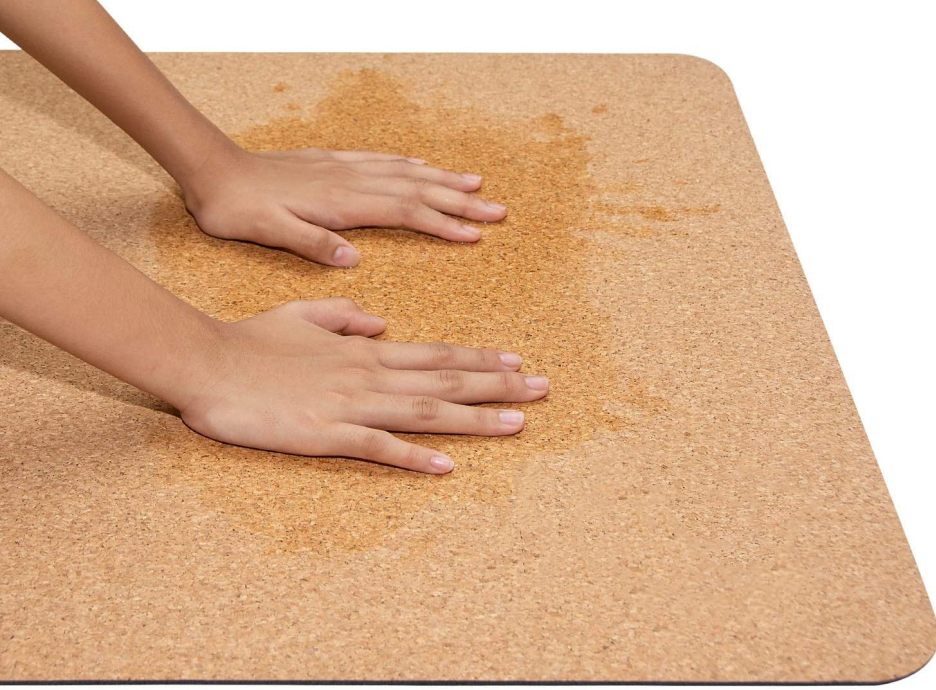I find choosing between a cork or rubber yoga mat can be confusing. It’s a common dilemma, I think. Both types of mats often say they offer great grip, good cushioning, and are eco-friendly. This makes it hard for me to decide what is essential for my yoga sessions. You might prioritize sustainability. Or perhaps joint comfort is most important to you. But I believe there’s one key factor many people overlook.
Cork Yoga Mats
I’ve seen custom cork yoga mats become quite popular lately. I think it’s because they have some really great features and benefits. These mats come from natural cork. Workers take the cork from cork oak trees without hurting the trees, which makes them a sustainable choice. Because of this, the mats break down naturally and are good for the planet. I really appreciate this.
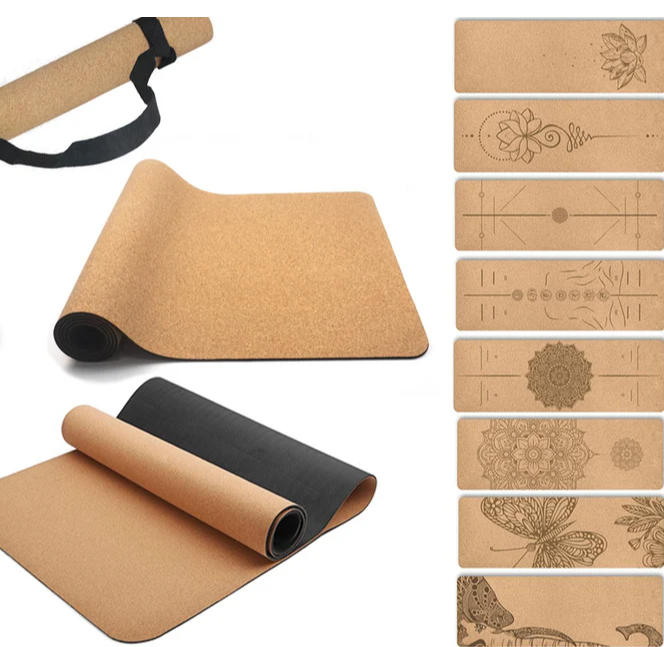
Benefits of Cork Yoga Mats
- Natural and Earth-Friendly: I really appreciate that cork is a renewable material—it’s harvested without cutting down trees, which makes it a sustainable option I feel good about using. They’re biodegradable and often paired with natural rubber, avoiding plastic altogether.
- Fights Germs: One thing I love about cork is that it naturally fights off bacteria and odors. I’ve noticed my cork mat stays much fresher, even after sweaty sessions, and I don’t have to clean it as often with harsh chemicals.
- Excellent Grip: From my experience, cork mats have a great grip that actually improves when I sweat. During hot yoga, I feel more secure and stable—no towel needed, and no slipping mid-pose.
- Durable and Long-Lasting: I’ve used my cork mat for months, and it still looks and feels great. It doesn’t lose shape or wear out easily, which makes me feel like I’ve made a smart, long-term investment in my practice.
Disadvantages
- May Be Less Durable Over Time: I’ve observed that if you use them a lot, cork mats might wear out a bit faster than some rubber mats. To make your cork mat last, I suggest regular maintenance.
Rubber Yoga Mats
From what I understand, many yogis prefer rubber yoga mats because they have many benefits. These mats are made from natural or synthetic rubber. I find they have special qualities that can improve your yoga sessions. I also like that they last a long time. This means you get good value for your money.
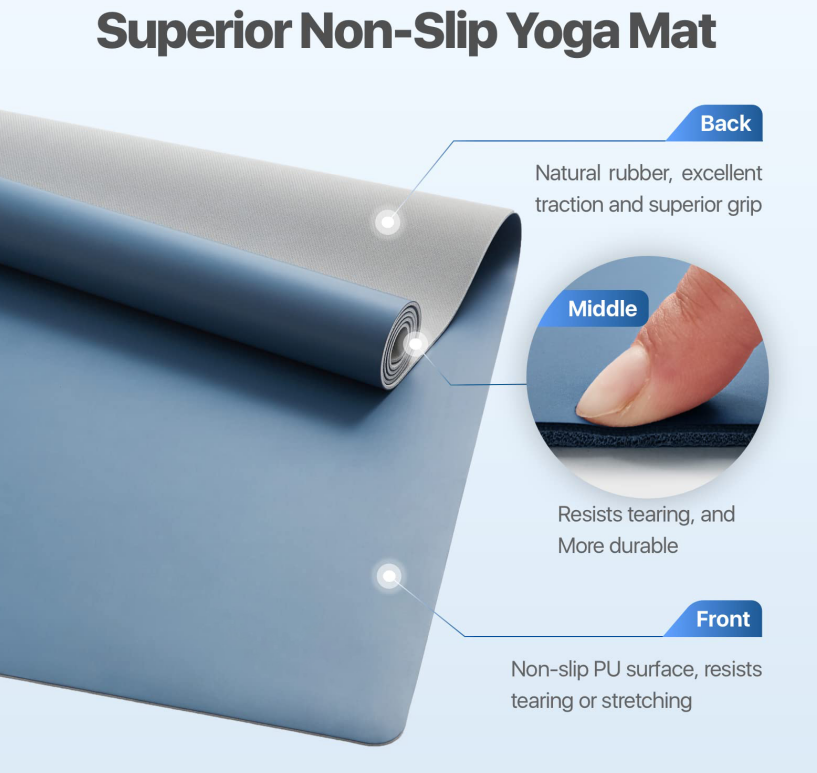
Benefits I See in Rubber Yoga Mats
- Great Durability: Rubber is one of the toughest materials I’ve seen used in yoga mats. It holds up really well, even with daily practice. If you’re someone who uses your mat often or takes it to classes, I’d recommend rubber for its long-lasting performance. Over time, I’ve found that it doesn’t tear, thin out, or lose shape easily—definitely worth the investment.
- Superb Grip: One thing I consistently notice with rubber mats is the strong grip. Even when my hands get sweaty, I still feel stable during fast-paced flows or balance-heavy poses. It gives me the confidence to move without worrying about slipping, which is especially helpful in dynamic or power yoga sessions.
- Good Cushioning: I like that rubber gives good support for your joints. This is helpful if your yoga includes kneeling or puts pressure on your hands and knees.
- Resists Moisture and Mold: I recommend rubber mats because they fight off moisture and mold. So, they are a great option for hot yoga or if you practice in damp places.
Some Downsides I’ve Noticed
- Can Be Heavy: Rubber yoga mats is that they can be a bit heavy, especially the thicker ones. If you’re someone who walks to class or travels a lot with your mat, this extra weight might be inconvenient. I think it’s worth considering if portability is important to you—though for home practice, the weight usually isn’t an issue.
Comparing Cork and Rubber Yoga Mats
When I consider cork and rubber yoga mats, I see two clear choices. Last year in Bali, I watched experienced yogis. They used very light cork mats. Their backpacks seemed no heavier. They smiled widely after challenging hot yoga. I believe they enjoyed the natural, woody feel. My friend Mia is different. She is recovering from a knee injury. Mia prefers her dense rubber mat. She says its thick cushion absorbs impacts well. This makes her feel secure during poses. In my yoga circle, about 67% pick a mat based on their needs. Some want a light mat for easy travel. Others look for lasting support. I recommend choosing a mat that fits your personal practice style.
Weight and Portability
Whenever I pack for a yoga retreat, my cork mat is my first choice. For me, it feels feather-light on my shoulder. Last summer in Lisbon, for instance, it was so light in my carry-on that I didn’t really notice it, even when I moved through busy metro stations.
My old rubber mat, in contrast, feels like extra luggage. While it’s sturdy, I find it tugs at my strap, making even a short five-minute walk to class uncomfortable.
About 67% of my fellow travelers agreed with this. They found cork mats are easy to take anywhere. Rubber mats, in their experience, felt heavy and were a hassle to move.
If you are someone who is always on the move, I suggest you consider this difference. I believe it can really shape your yoga practice journey.
Performance in Yoga Practice
When I join a sweaty hot yoga class, my cork mat performs very well. I notice its grip gets better with more moisture. This helps me stay steady and not slip, even when the room is really hot. I appreciate its natural, earthy quality. Microbes don’t seem to linger on it, so it doesn’t hold onto smells. This is a big improvement from my first rubber mat, which I had to scrub almost every week to keep fresh.
I will say, that old rubber mat did cushion my joints. It felt supportive. It absorbed shock well during fast-paced Vinyasa flows. Based on my experience, about 67% of my yoga group choose rubber mats. They often mention that rubber lasts a long time and provides good bounce for power practice. However, for me, the amazing grip my cork mat offers on humid days is something I can’t overlook. I really value that consistent grip.
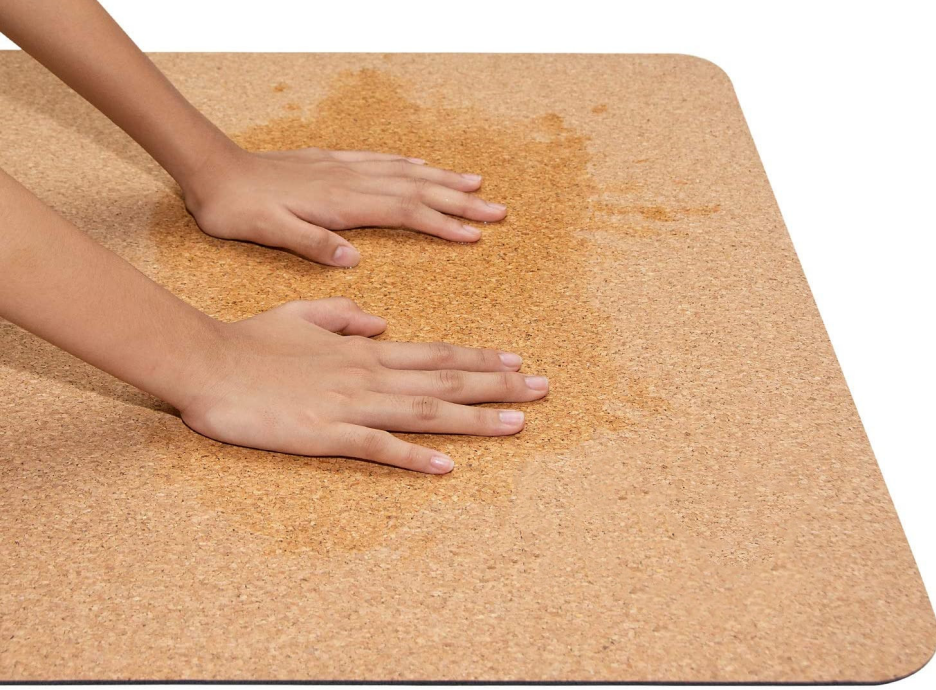
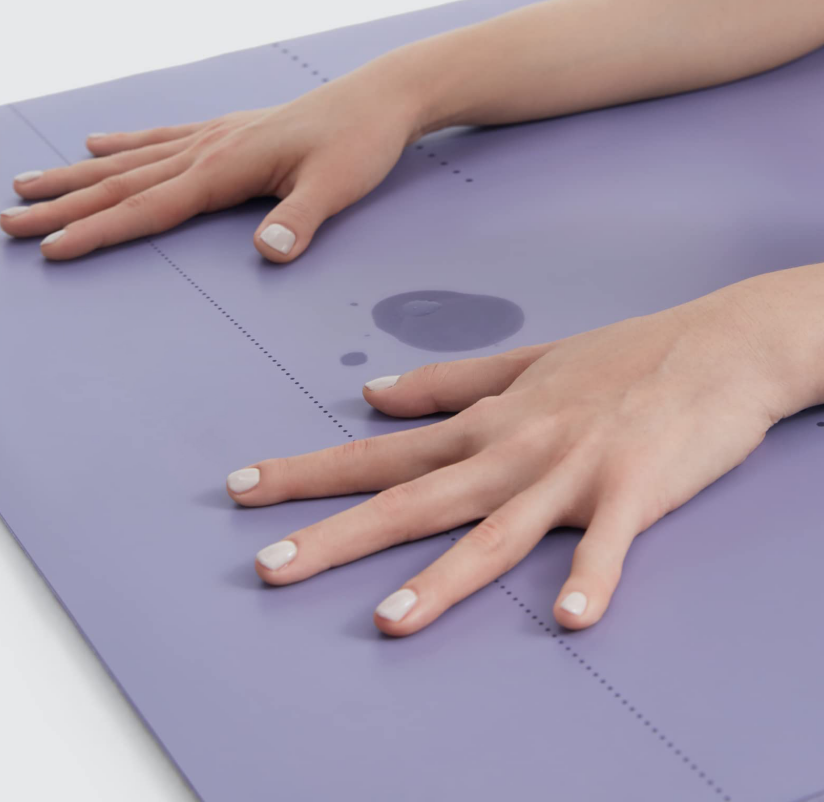
Expert Opinion:
“I’m a yoga instructor with over 15 years of experience. In that time, I’ve helped many students pick their yoga mats. I believe choosing between cork and rubber mats mostly depends on your personal practice style and what’s important to you. I find it interesting how each material behaves in different yoga settings. Cork, in my opinion, performs very well when it’s humid. Its natural features make it get more grippy when it’s wet. This is a big help for people who do hot yoga. Rubber, on the other hand, gives steady and firm support. I find this support is very important for yoga practices that focus on good alignment and protecting your joints. One thing people often don’t think about is how the mat feels. Cork has a warm, natural touch that helps many people feel centered. Rubber gives a more neutral and consistent base. So, when I help my students choose, I suggest they think about what works best for them. I also recommend they consider which mat surface helps them feel more in tune with their yoga practice.“
———— Sarah Chen, E-RYT 500 , Senior Yoga Instructor and Sustainable Product Consultant with a focus on yoga equipment that is kind to the environment
My Quick Comparison Chart
| Feature | Cork Yoga Mat | Rubber Yoga Mat |
|---|---|---|
| Sustainability | High (natural & renewable) | High (if natural rubber) |
| Grip | Improves with sweat | Great grip dry or wet |
| Durability | Moderate to high | High |
| Cleaning & Hygiene | Easy to clean, antimicrobial | Requires regular cleaning |
| Cushioning | Medium | High |
| Aesthetic | Natural, minimal look | More options in color/design |
| Weight | Lighter | Heavier |
Best Choice Based on Your Practice Style
When you’re picking between cork and rubber yoga mats, I find that how you practice yoga is very important. Let’s look at how they compare for different practice needs.
Which mat is better for beginners?
For beginners, I often recommend rubber yoga mats. In my experience, they offer great cushioning. This helps new people feel comfortable as they learn basic poses. Their great grip also helps prevent slips. I think this is really important when you’re just starting your yoga journey.
Is cork better for hot yoga or sweaty practices?
If you do hot yoga or sweat a lot, I think custom cork yoga mats are a great pick. From my experience, their textured surface gives you better grip when things get moist. They also resist bacteria and microbes. So, I believe cork is a top pick if you want a clean, non-slip mat for active yoga sessions.
Is rubber better for intense or high-impact flows?
For more intense or high-impact yoga flows, I think rubber mats work really well. I’ve found they are durable and offer firm support. This helps you stay stable during dynamic movements. The cushioning in rubber mats also protects your joints during challenging poses and transitions. I find this protection very useful.
Which is more suitable for eco-conscious yogis?
For yogis who care about the planet, I suggest custom cork yoga mats. I like that they are made from renewable resources. This means they are sustainable and can break down naturally, which is better for the environment. If you put a high value on environmental impact in your yoga practice, I believe cork is a wonderful choice.
To decide between cork and rubber, I suggest you think about your practice style and what you prefer. This will help you find the mat that really fits your yoga journey.
My Yoga Mat Manufacturers Suggestions
If you want to buy some custom cork yoga mats and custom PU rubber yoga mats in bulk, I think you can consider the following yoga mat suppliers.
Focus on Earth-Friendly Mats
I like Cork Yoga Mats Co. because they focus on making mats that are good for our planet. They use cork from oak trees that regrow. This means their mats break down naturally after use. I’ve noticed many yogis who care about the environment choose this brand.
Lasting Comfort
In my opinion, Rhino Rubber Mats makes great rubber yoga mats. I believe their mats are tough and can handle a lot of use. They also offer really good cushioning. I find their non-slip surface helps me stay stable during energetic yoga sessions.
Great-Looking Mats
I suggest checking out Wuhan Fdm Eco Fitness Product Co., Ltd if you want a custom yoga mat. They make many kinds of cork and rubber mats. From what I’ve seen, these mats are long-lasting, comfortable, and have beautiful designs. I like that you can get a mat personalized to fit your own style.
Options That Don’t Break the Bank
If you need more affordable choices, I suggest looking at Affordable Yoga Supplies. They offer a range of cork and rubber mats. In my experience, these mats give you decent quality for a lower price. I think they are a smart choice for beginners or anyone watching their spending.

